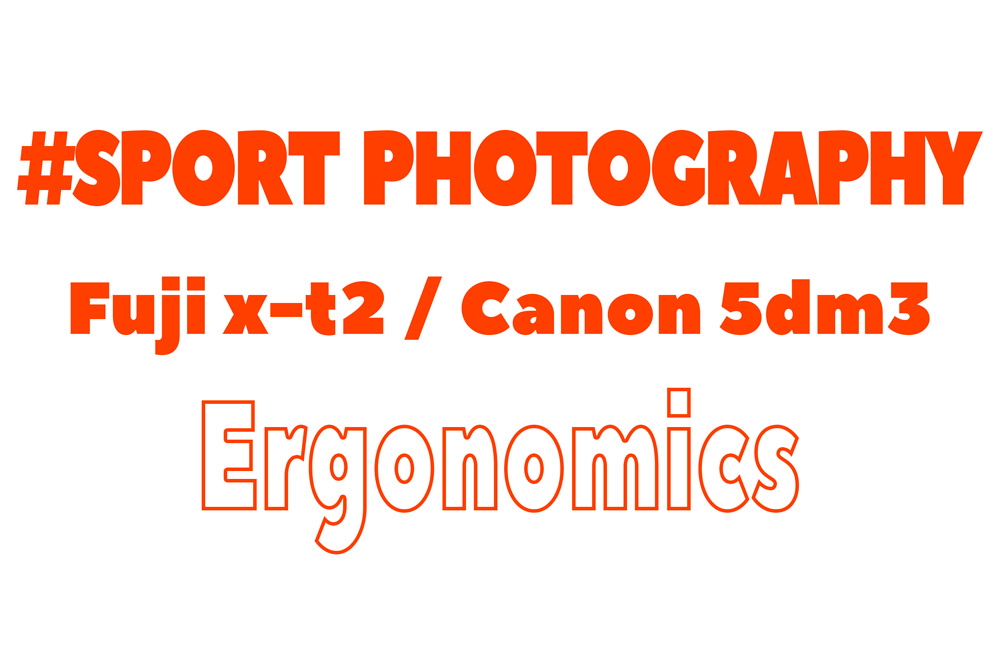
As you maybe know, I recently switched from a fullframe DSLR to a mirrorless camera. Beforehand, I had a Canon 5dMIII, which gave me great pics, but was heavy for me, my back, my arms… Sometimes, I was so clenched on the camera my hand hurt even one day after the shooting. That’s the reason why I gave the Fujifilm x-t2 a try. Now, my back and arms are happier ! I’d like to share with you about this transition.
Weight is not the only element of choice of a camera, that’s a fact. Our camera must deliver the pictures we expect, its ergonomics must fit our way of shooting, and it must be sturdy enough to be our companion for quite a while.
In this post, I will mainly focus on the ease of use side of the camera, on its ergonomics : after 4 month of shooting sport (mainly basketball, ice hockey, rock climbing), I will tell you the pros and cons I experienced when using the Fuji versus the Canon.
I describe my journey, according to my style of shooting and my expectations. By no means do I want to preach use this or that camera. That being said, let’s start !
Advantages of the Canon 5dM3
- The 5dM3 allows to define 2 focus points at the same time. That’s really a handy feature for me when I want to switch focus from right to left when shooting sport. However, I use some features of the x-t2 to switch from left to right, see this post.
- It allows to define programmable custom modes : one for action freeze, one with a deeper depth of field for example. That’s handy.
- There is no interruption in the viewfinder when shooting.
Advantages of the Fuji x-t2
- Its weight. I pair the x-t2 with the 16-55 f2.8 x lens, which is not a small lens. Even so, this combo is a lot more leightweight than the 5d.
- Shooting though the EVF. It gives me an instant overall look at the scene and its exposure. WYSIWYG is great !
- The histogram in the EVF when shooting. I can quickly check the highlights and the blacks. I know what is going to be burnt (the gym lights, that’s ok, but the white shirts of the players, I want some details in them), and also if I will be able to get back some details from the dark areas.
- The replay of pics in the EVF. I prefer this over having to put the camera down and look at the LCD monitor : you keep the camera at eye level, you are prepared. Another factor is my sight which is not so good anymore at reading distance. EVF and presbyopia get better along.
- Being able to change shooting parameters in the EVF. I am shooting, I framed. If I want to change something in the parameters, I don’t move and change them by following the menus in the EVF. It’s time saving.
- The camera is far more discreet. I love this because I want the people I photograph to forget that I photograph them. I like them to think that I am using a old point and shoot camera.
That’s all for today. I hope this post gave you some points to look at if you are shooting sports. Also for those who already took the jump, please share your own experience in the comments !
Stay tuned !
